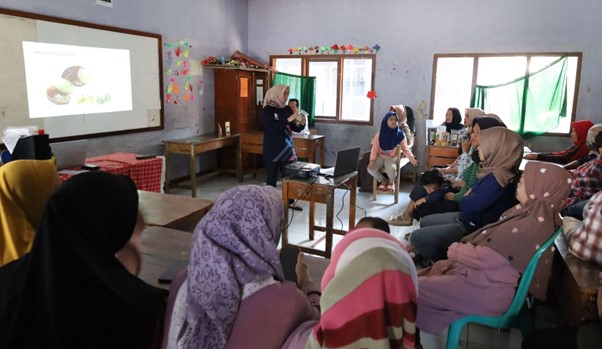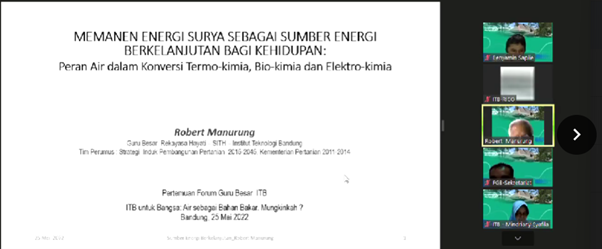Breaking Down the CO2 Concentrating Mechanism to Improve Photosynthesis
By Adi Permana
Editor Adi Permana

BANDUNG, itb.ac.id – The Institute for Research and Community Service (IRCS) ITB held its latest workshop on Wednesday, 25 January 2023. With the topic "Prospects of Microalgal CO2 Concentrating Mechanism (CCM) for Food Security", the researcher Alfredo Kono, Ph.D. was invited as the speaker of this workshop.
Aside from teaching at the Biochemical Research Group of ITB Faculty of Mathematics and Natural Science, Alfredo is an active researcher at the Bioscience and Biochemical Research Center. He majored in Chemistry during his undergraduate years before pursuing his master's degree in the Biochemical Study Program, both in ITB. He then graduated with his doctorate study in the field of genetics at IOWA State University, USA. From his studies, he decided to focus on exploring CCM (CO2 Concentrating Mechanism) to maximize the process of photosynthesis.
The global population is rapidly increasing, yet the rate of agricultural productivity says otherwise. If the productivity rate remains stagnant, the agricultural output is predicted to be unable to supply the global food demand that will rise by roughly 60% in 2050. Such a situation could lead to food shortages.
In the quest to improve food security, one of the possible solutions is to enhance the photosynthesis process. Photosynthesis is a naturally occurring process found in the chloroplasts of plants and algal cells. This cellular component acts similarly to solar cells- they "absorb" sunlight and convert it into electrical energy.
Another known process in plants is the Calvin cycle, which catches CO2 gas from the atmosphere and undergoes several conversions to form carbohydrates.
The first step in the Calvin cycle is capturing CO2 from the atmosphere. A protein called Rubisco contributed to the cycle's high production rate. However, Rubisco is very dependent on high CO2 concentration. If the atmospheric CO2 concentration is low, the protein will not reach half its performance capability. Thus, CCM was developed to aid Rubisco's efficiency during photosynthesis.
"One of the crucial components of CCM that requires further understanding is the protein transporters that carry CO2 and bicarbonate to the chloroplasts. One of the transporters, LCI1, is currently the focus of my research at ITB," said Alfredo Kono, Ph.D.
Alfredo and his colleagues discovered that LCI1 has a tunnel that allows the movement of CO2. It also possesses a gate that regulates CO2 transportation. These parts contributing to the CO2 transportation and regulation system are the keys to uncovering the mystery of CCM effectiveness for future large-scale implementation.
Reporter: Inas Annisa Aulia (Visual Art, 2020)
Translator: Favian Aldilla R (Civil Engineering, 2019)

.jpg)
.jpg)
.jpg)
.jpg)
.png)



